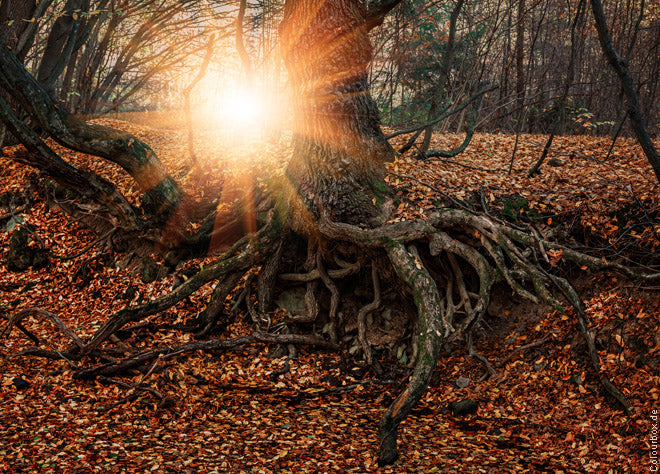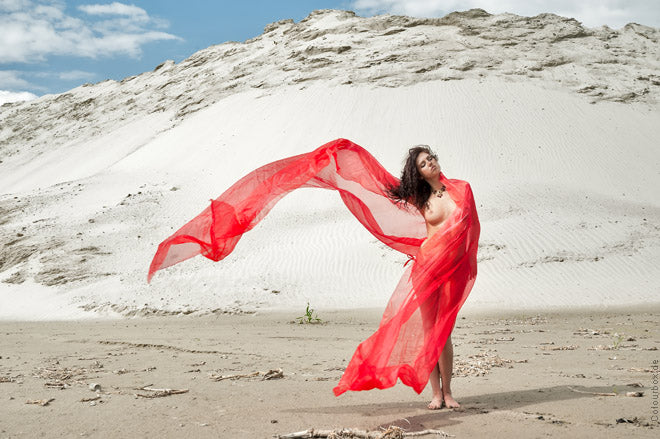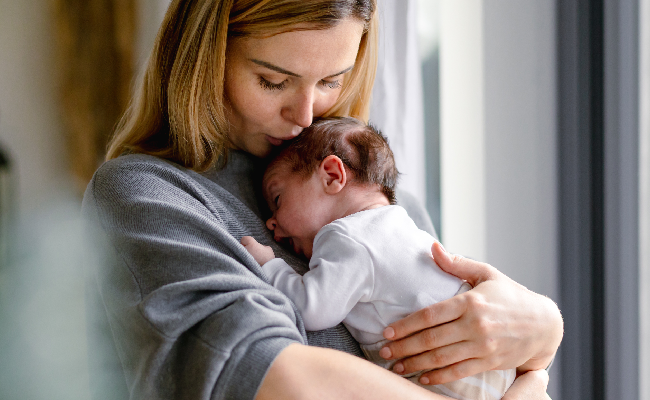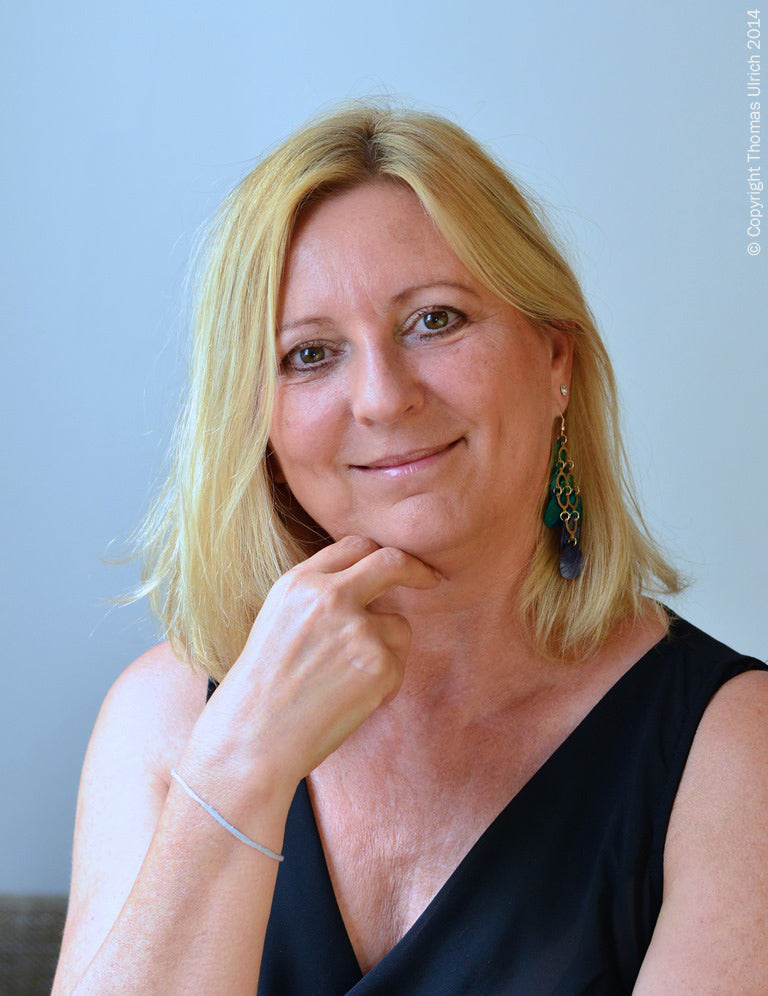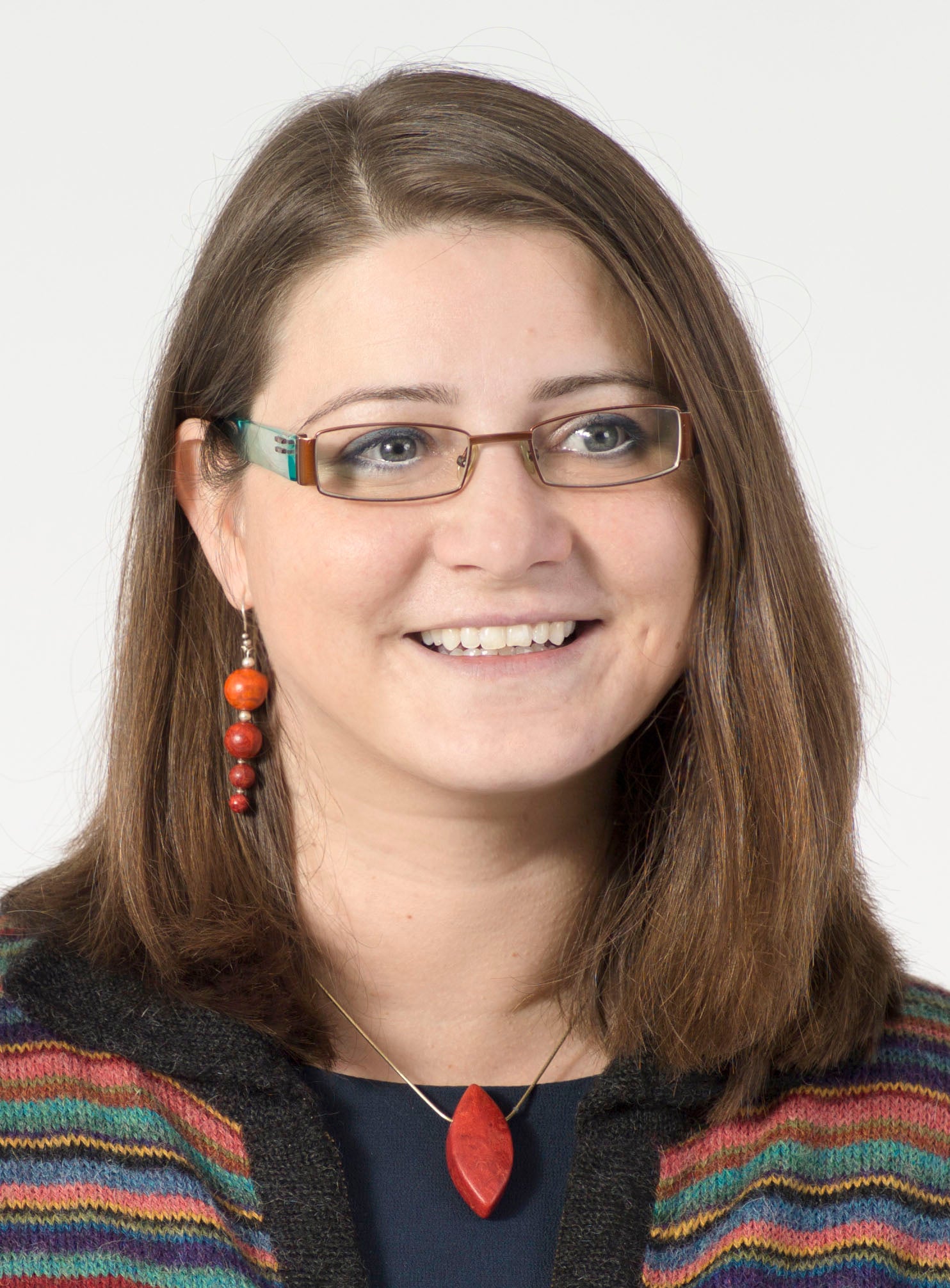
"The revival of the primal feminine power in all of us paves the way to a better, life-affirming future!"
"The revival of the primal feminine power in all of us paves the way to a better, life-affirming future!"
Interview with Kristina M. Rumpel , sociologist, visionary and expert for new birth culture on " Power of the Feminine "
"Male and female are fundamental qualities of life: while the male power sustains life, the female is the driving, all-moving energy that can create and fill life from within itself. We all - men and women - carry both poles within us; living our female part positively and giving it space as a meaningful life context in society is the key to a more peaceful world and thus to a life-affirming and livable future!"
Kristina Marita Rumpel, author of the non-fiction book “The Power of the Feminine”, sees a revival of the primal female power as an opportunity to reconcile both the sexes and the world religions so that all people can develop their full potential and live in peace with themselves and the world.
With your first book, “FlowBirthing,” you ventured into a new birth culture. What is the meaning and goal of your new work and how does it relate to that earlier project?
Kristina Marita Rumpel: Births have always been and will always be culturally shaped. How we give birth says much more about the intellectual horizon of an era than about births as they could actually be. Obstetrics in Germany is characterized by a safety and risk mentality and a belief in technology. As a result, only seven percent of children are born naturally. If we don't want natural births to die out and more and more women and children to be traumatized by avoidable interventions, we need to rethink things in the sense of a new birth culture. That's what I'm advocating. In addition, my point of view raises the fundamental question of how much space we want to give to the natural, the feminine, the mystery of life in a highly technological, rational world.
I asked myself: If it is not even possible to access female power and celebrate femininity during birth, a thoroughly female act, then where is it possible? In obstetrics, the male view of birth has dominated for centuries, and I have found that this applies to other areas as well. We live in a male-dominated world, which in turn leads to a one-dimensional view of life; and one-sidedness, no matter in which direction, is always harmful. With my second book, I want to break down the self-imposed limitations and old shackles and help ensure that "male" and "female" can have EQUAL validity in the world. To do this, we need a new understanding of "female" and "male" as primal forces of life. This view is an enormous enrichment for personal life and, in my opinion, is also the key to a life-affirming and peaceful world.
By rediscovering the feminine power we can find our way back to the life-affirming principles of life. How did it happen that this elementary life force could be forgotten?
Kristina M. Rumpel: Without a clear yes to life, to everything that was, is and will be, natural birth is not possible. In this simple statement lies the essence of being as part of other life-affirming principles that reveal themselves through births in connection with the female power. I am convinced that all the wisdom in the world once arose from the experience of giving birth. Births are highly spiritual moments in which a new person and a new soul come into the world, and so it is not surprising that women in ancient times were seen as creators of new life and mediators between heaven and earth. Accordingly, the early cultures of humanity were matriarchal, and it was the wise women and mothers who, as guardians of the natural order, ensured a life-affirming coexistence and had a natural power that naturally integrated the male as part of the whole.
The upheaval probably came with the settlement of the population, when men understood their part in the creation of new life. They gradually claimed power for themselves by placing themselves above the female. This was accompanied by the devaluation of the natural order, and so the worldwide oppression of women took place hand in hand with the exploitation of Mother Earth. Because the male cannot give birth on his own and therefore cannot create from what is available, he gained access to power through a new world view detached from nature - with all the devastating consequences of violence, destruction of nature, war and life-despising practices that humanity has known since then.
Since male power had to be artificially enforced, it became necessary to maintain power by repressing women and also repressing the female power as the life-giving force that unites "male" and "female" in harmony, or to erase all memory of it, because it was and is the source of female power. This is also the reason why female sexuality and childbirth were and still are so heavily regulated, because even today the natural strength and power of women are hidden in self-determined sexuality and birth. The repression was a process in several stages over a period of around five thousand years. However, fragments of the old time of peaceful coexistence still remain, and so it is possible to free the individual parts from the ballast of the centuries and reconnect them with one another. The female power emerges as that greatness in the universe that is life itself. Remembering it brings the sacred - because thoroughly life-affirming - principles back into the world.
The current crises and catastrophes are caused by the misguided, rootless male view of the world. What do you think is needed to stop or even reverse this development?
Kristina M. Rumpel: When I say that the crises are the result of misguided masculinity, I don't mean that all the bad things in the world are caused by men. Absolutely not. I am concerned with reconciliation between the sexes as a prerequisite for peace in the world. But in order to change the situation, which is what the majority of people around the world want, we first need to agree that we live in a male-dominated world. Even if there is legal equality between men and women - at least in the Western world - we are a long way from seeing "male" and "female" as two equal ways of accessing the world. Many women (and feminine men too) live in a struggle with their femininity out of a desire to belong and suffer from inner tension and external contradictions.
To solve the dilemma, it is important to understand that women and men are of course equal in terms of their rights and dignity, but not in the quality they bring to life. Anyone who studies male and female soul qualities will find that male qualities serve to preserve life, while female qualities are geared towards the fulfillment of life. In other words: the female provides the time and space within which life can develop, and the male supports the female. This does not result in any value or hierarchy, but rather the realization that the male is related to the female, which in turn, through the female cycle, is directly connected to the universal flow of life of creation, growth, decay and new beginnings. If we have now repressed the female in ourselves and in the world, the male loses its reference point and acts in a vacuum. That is what I mean by misguided, uprooted masculinity. If we also understand the feminine power as the fundamental life force in all of us, we have cut ourselves off from our roots by repressing the feminine - as an equal force within us and as the meaningful center of the community. This inevitably leads to increasing disorientation in the self-created maze of human entanglements.
In my opinion, we urgently need to strengthen the female power in women and men, because we all have male and female soul parts within us. This would go hand in hand with an appreciation of female qualities as those qualities that lead to a future worth living. With the increase in creativity, empathy and intuition in the world, there is hope that there will be a balance of forces and that we will overcome the polarities. Because the division between woman and man, man and nature, poor and rich, good and evil is the thorn in our flesh and the pain of humanity that must be healed through an integrated, i.e. holistic approach to life. Then the way will be clear for concepts that serve life.
Archaeological and biological findings suggest that there is something like a female origin of all life. What facts support this so-called "female creation story"?
Kristina M. Rumpel: Every child knows: All life springs from the female womb. The womb is, so to speak, the universe for the developing life. The mother's experiences, feelings and thoughts during pregnancy and of course the shared birth experience shape the new life to a great extent. Since the beginning of time, life has been passed on from mother to daughter. Science has also identified so-called primordial mothers in genetics. From there, it is only a small step to assume that there is a Great Mother on a spiritual level from whom all life once sprang.
The worldwide discoveries of so-called Venus figures offer impressive evidence of the female creation story. These are clay figures from around 30,000 years before Christ that represent the female in its life-giving form. In addition, before the time of monotheistic religions, there was a belief in goddesses worldwide, regardless of culture and region, which shows astonishing similarities in the interpretation of creation. One of the first insights of humanity and one of our shared experiences worldwide is that the context of life or the origin of being is female. This is also supported by the fact that every new life is female at the beginning, i.e. during the first seven weeks in the womb. In addition, there are animals that reproduce purely female, which also indicates that the female power is the universal life force.
The reinterpretation of female power is closely linked to the emergence of world religions. Does the rediscovery of female power therefore also lead to a change in religious consciousness or its cultural manifestations?
Kristina M. Rumpel: The female creation story and the worship of the Great Goddess as the source of life are much older than today's world religions. All world religions have integrated ancient female wisdom into their beliefs. Why did they do that? Because only by adopting it could they persuade people to adopt a new faith. We can easily understand this, for example, when we look at where the places of worship were built. They were all built on the old holy sites. The adopted symbols and spiritual wisdom were overwritten or underpinned by the ideology of the new religion, which no longer arose from life, from the belly of the woman as the divine womb, but was a brainchild cut off from the natural context to enforce power and rules. The result of this was that people had to believe and could no longer directly understand the wisdom in themselves and in their lives. As we know, this was associated with punishment, the stirring up of fear and persecution. Thus, little by little, the meaning of the old symbols and rituals was lost, and, as we can see today – at a time when the power of world religions is declining – so was the willingness to believe.
The dramatic thing about it is that people struggle with their faith or fall for religious ideologies or gurus on the way to adapting their inner truth to a world that has been turned upside down by the reinterpretation of primal spirituality and is everywhere showing a contempt for life. The attempt to free ourselves from these entanglements inevitably leads to further entanglements as long as we do not go back to the original source. The word "religion" actually stands for exactly that - it means "reconnection". A reconnection to the roots of humanity goes beyond the world religions and leads to the female primal source of all existence, which can still be found in all world religions and would be fertile ground for the reconciliation of religions. In Christianity, for example, the Great Goddess has survived in popular belief in the form of Mother Mary, and according to the Bible, the Holy Spirit is a holy spirit: Sophia is the universal female creative force. The rediscovery of feminine power as the life-giving force in the universe is enlightening – even without answering the question “God or Goddess,” which no one can answer during one’s lifetime and which is a private matter.
Remembering the Great Goddess as a worldwide primal religion does not mean paying homage to a goddess cult, but rather becoming aware of the interconnectedness of all life. In this way, we can once again encounter the divine directly in our lives. For example, in plants that nourish and heal us. Or in meditation, in visions, in the experience of birth and death, or in every person sitting next to us, in our mothers and fathers, children and ourselves, just as others encounter the miracle of life through us. The rediscovery of feminine power sensitizes us to the fact that we are all daughters and sons of the one primal mother. This is the basis for a worldwide sisterhood and brotherhood that is not morally enforced, but grows out of the immediate insight and depth of our soul.
The discussion about equality and gender construction under the keyword “gender” is as current as it is controversial. What do you see as the advantages and disadvantages of these debates?
Kristina M. Rumpel: Since I once studied “Gender & Diversity” myself, I am very familiar with the debate. I think the term is essential to uncovering the discrimination based on gender that still exists in Germany and to becoming fundamentally sensitive to the issue of unequal treatment. There is no question: women and men are first and foremost people with the same rights and freedoms in life. And yet there is a biological difference, namely the ability of women to give birth to life. Negating this essential difference in order to protect women from discrimination backfires in my opinion. It is not about making women better men. Apart from the fact that women will always remain a copy and never achieve their original strength and power. Rather, it seems important to me to learn to value equality in diversity. To do this, it is essential that we develop an understanding of femininity from within, which leads to female self-awareness. The diversity of women (and men) is a central insight and strength of the feminine.
Beyond the stereotypes of man and woman, which for me are social categories, I understand "female" and "male" as primal forces that spark life when they merge. Both are indispensable for life, which emerges from the primal feminine - the feminine power that integrates "male" and "female". As always, it all depends on the dosage. Both can reach their full potential when they can flow and work freely in harmony, i.e. without restrictions. Dominance or suppression always has a negative effect sooner or later. This applies to the big picture as well as to each person personally, because we all have male and female parts within us. The art of living is to become aware of these parts or poles within yourself and to live them positively, i.e. not in avoidance or suppression. The ancient wisdom about the chakras provides stimulating impulses here. To get this far, you need to be open to the soul level and to understand that both qualities are valuable for people and life itself. Ultimately, it is about understanding and integrating differences.
The same applies to work and society. It has long been proven that mixed teams are more productive; however, this requires a culture of appreciation for diversity and not one direction dominating, which is unfortunately still mostly the case. First, we must understand that equality is not about overthrowing men's power and is not about more women in leadership positions, but fundamentally about more freedom and joy in life for everyone by strengthening female qualities in the world. The common goal and thus result of gender reconciliation is mutual relief, more diversity and liveliness. This clears the way for creativity, innovation and vision, in short: for a life-affirming future, supported by the love of life.
Book tip:
Kristina Marita Rumpel: The Power of the Feminine. The key for women and men to a life-affirming world. Mankau Verlag GmbH, 1st edition November 2016, paperback 16 x 22 cm, full color, 159 pages, €15.95 (D) / €16.40 (A), ISBN 978-3-86374-302-4.
Link recommendations:
More information about the non-fiction book "The Power of the Feminine"
To the reading sample in PDF format
More about the author Kristina Marita Rumpel
To the Internet forum with Kristina Marita Rumpel
